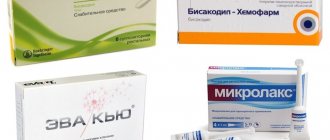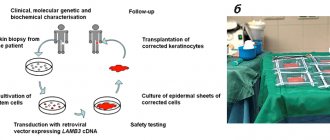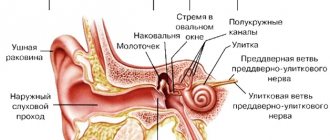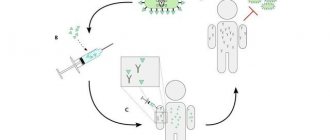The drug Vigantol is effective when necessary to regulate the exchange of phosphorus and calcium in the body.
Contents:
- Release form and composition
- Pharmacology and pharmacodynamics
- Why take Vigantol
- How to take Vigantol correctly for infants
- Contraindications and adverse reactions
- Overdose
- How to properly store Vigantol
- Interaction
- Reviews about Vigantol
- Which drug is better: Aquadetrim or Vigantol
- How to replace Vigantol
- Where to buy Vigantol, price
Pharmacodynamics, pharmacokinetics
The task of the drug lies in regulating the metabolism of calcium and phosphorus. But in addition to this, the body is replenished with vitamin D3. Taking Vigantol promotes the mineralization of skeletal bones, which is very important for the normal functioning of the parathyroid glands.
Absorption of the drug occurs through the gastrointestinal tract. It has been proven that the active substance Vigantol can penetrate the placenta and enter breast milk.
Excretion of colecalciferol occurs mainly in the bile, and only a small part is excreted in the urine.
Vigantol 1000 instructions for use
Indications for use
- Prevention of rickets in the developing fetus, premature infants and normal newborns;
- Treatment of diseases associated with a lack of minerals in bone tissue;
- D3 deficiency caused by malabsorption syndrome;
- Prevention and treatment of osteoporosis in the elderly (as an additional remedy);
pharmachologic effect
Stabilizes intestinal nutritional processes with missing calcium and phosphorus. Affects the permeability of intestinal walls, increases the absorption of phosphorus and calcium. Saturates bone tissue with minerals, which helps strengthen bones and joints.
How to take, course of administration and dosage
Dosage
For preventive purposes, it is prescribed to infants from approximately 2 weeks of life to one year. For babies over 1 year of age, the daily dose is increased (this is especially true in spring or autumn). It is highly advisable that a good doctor indicate the exact dose and duration of the course.
To prevent rickets in children aged 1 to 2 years, the daily dose is 500 IU. In case of malabsorption syndrome, the dose can be increased to 1000 IU per day (in this case, consultation with a doctor is necessary!). If the child is fed formulas containing cholecalciferol, the dose must also be adjusted.
For D3 deficiency, the dose is 500 units/day.
For the prevention and complex treatment of osteoporosis, it is recommended to take 1000 units/day.
Note! If you are not sure that you are deficient in this vitamin, or want to clarify the optimal dosage, you should consult your doctor.
Dosage from 500 units/day.
Elderly people who take vitamins for a long time and, at the same time, take diuretics or medications to maintain normal heart function, should regularly monitor the level of Ca in the urine and blood (take appropriate tests).
It is important! The maximum permissible level of Ca in the blood is 2.75 mmol/l, in urine – 7.5 mmol/day. If the specified concentration is exceeded, the dosage of the vitamin is reduced or completely stopped.
If you miss one or more doses, there is no need to compensate for this by increasing the dose once (it will not help). Therefore, you should stick to the original dosage.
It is not advisable to stop taking the pills on your own - there is a high probability of repeated vitamin D3 deficiency.
Dosage from 1000 units/day.
Before you start using Vigantol in such a concentration, you need to consult your doctor and tell him about all (!) medications that you take. Be sure to regularly get tested for Ca levels in your blood.
How to take the drug correctly
Instructions for use of Vigantol for different age categories.
Infants under 1 year
The tablet must be dissolved in water, milk or juice in a small spoon. After thoroughly mixing the resulting suspension, it is given to the baby during feeding. You can also add the crushed drug to the prepared food and mix thoroughly.
Advice! Do not dissolve the tablet in a bottle of baby formula or water - the child may not finish it and some of the vitamin will remain in the container.
Teens and adults
The tablet must be dissolved in water, milk or juice in a small spoon. After thoroughly mixing the resulting suspension, it is given to the baby during feeding. You can also add the crushed drug to the prepared food and mix thoroughly.
The tablet is taken before, after or during meals and washed down with water.
How to take VIGANTOL for pregnant women and during lactation
Before use, you should consult with your supervising physician. The usual dose is up to 500 units/day. Dose up to 1000 units/day. over a long period of time can provoke hypercalcemia. This, in turn, can cause the baby to develop calcification, microcephaly, various congenital malformations in the development of organs and tissues, premature closure of the fontanel, disturbances in the formation of the skeleton and vision problems.
During breastfeeding, a woman must strictly adhere to the dosage and vitamin intake regimen recommended by the doctor.
Contraindications
The manufacturing company recommends that you consult with a good doctor before using the tablets - in some cases, a preliminary analysis of the concentration of vitamin D in the body is necessary. Therefore, for those who are found to have excess levels of free calcium in the blood or urine, it is categorically contraindicated.
People suffering from allergic reactions to one or several components of the drug are PROHIBITED from taking it!
Observation of the attending physician is MANDATORY for:
- Serious diseases of the urinary system that can lead to urolithiasis;
- Concomitant use of thiazide-like diuretics (increases urination frequency);
- Kidney failure;
- Gastric ulcer;
- A number of kidney diseases accompanied by impaired phosphorus-calcium metabolism;
- The likelihood of causing hypercalcemia or hypercalciuria due to a sedentary lifestyle;
- Sarcoidosis, when there is a risk of increasing the formation of calcitriol;
- Thrombophlebitis;
- Pseudohypoparathyroidism (rare genetic disease).
Those who simultaneously take other medications containing cholecalciferol also need to be tested for vitamin D levels - in this case, the dosage is prescribed by a specialist on an individual basis.
Side effects
With an overdose of vitamin D3, there are usually no characteristic symptoms. But you should be wary if you have the following problems:
- allergies (up to Quincke's edema), skin itching;
- hair loss on the head;
- loss of appetite;
- dry mouth, constant thirst;
- nausea, vomiting, or cramps;
- diarrhea or constipation;
- increased frequency of urination;
- headache;
- muscle pain;
- feeling of constant fatigue;
- heart rhythm disturbance (tachycardia);
- neuralgic problems.
In these cases, stop taking the drug immediately and consult a doctor: he should send you to be tested for hypercalcemia and hypercalciuria. With proper treatment (abstinence from vitamins, a diet of foods with minimal calcium content, drinking as much fluid as possible, prescribing a number of medications), the undesirable consequences of hypervitaminosis can always be avoided.
Special instructions
Interaction with medications
The desired effect is reduced by the simultaneous use of drugs that depress the central nervous system (including antiepileptics), as well as a number of glucocorticosteroids.
The following drugs can provoke hypervitaminosis:
- based on thiazide diuretics;
- increasing metabolism;
- containing vitamin D3;
- for the treatment of tuberculosis.
In some cases, cardiac arrhythmia may occur as a result of taking herbal cardiotonic drugs. Systematic tests for calcium levels in the blood and urine will help prevent this.
Storage conditions
Vitamins are kept in closed packaging in a shaded place at a temperature not exceeding +25C. The drug should be hidden from children. After the expiration date (it is indicated on the packaging and blister), the tablets should absolutely NOT be taken.
Try to dispose of expired medicine according to all the rules (they will tell you at the pharmacy) - this way you will help maintain environmental balance.
Side effects
In some cases, taking the drug causes negative consequences:
- arrhythmia
- hypercalcemia
- hypercalciuria
- vomit
- nausea
- change of consciousness
- mental disorders
- urolithiasis
- weight loss
- thirst
- poor appetite
Contraindications and adverse reactions
Medicines should not be taken under the following conditions:
- increased susceptibility to constituent components;
- excessive presence of calcium in the body;
- the presence of calcareous stones in the kidneys;
- immobilization.
Sometimes taking the drug can provoke negative reactions:
- high levels of calcium in the blood;
- nausea, vomiting;
- problems with consciousness and mental state;
- weight loss;
- lack of appetite.
Vigantol for children: instructions
The annotation clearly states how to take Vigantol to newborn children. Usually the medicine is mixed in one spoon of milk or water.
To prevent rickets, healthy (full-term) babies are prescribed 1 drop of the drug per day. The medicine must be taken for 5 days. After this, you should stop using the medication for two weeks. One-year and two-year-old children do not need to take the product in the summer.
Premature newborns, starting from the 10th day of life, are prescribed 2 drops of the vitamin daily for 5 days, after which it is necessary to take a two-week break and start taking the drug again according to the above regimen.
For rickets, the doctor may prescribe from 2 to 8 drops of the drug.
Vigantol 0.5 mg/ml 10 ml oil solution. for oral administration
Instructions for medical use of the drug VIGANTOL Trade name Vigantol VIGANTOL International nonproprietary name Colecalciferol Dosage form Oily oral solution 0.5 mg/ml Composition 1 ml solution (30 drops) contains the active substance - colecalciferol, 0.5 mg, which corresponds to 20,000 IU of vitamin D3, excipients - triglycerides. Description Transparent, slightly yellowish, viscous solution Pharmacotherapeutic group Vitamin D and its derivatives. ATC code A11CC05 Pharmacological properties Pharmacokinetics After oral administration, colecalciferol is absorbed from the distal small intestine, enters the lymphatic system, enters the liver and the general bloodstream. In the blood it binds to alpha2-globulins and, partially, to albumins, and is transported to the liver, bone tissue, skeletal muscle, kidneys, adrenal glands, myocardium, and adipose tissue. The maximum concentration in tissues is created 4-5 hours after administration, then decreases slightly, remaining at a constant level for a long time. In the form of polar metabolites, it is localized mainly in the membranes of cells, microsomes, mitochondria and nuclei. Deposited in the liver. As a result of biotransformation in the liver and kidneys, active metabolites are formed. Most of the colecalciferol and its metabolic products are excreted with bile into the intestine, from which they can be reabsorbed, returning to the enterohepatic circulation, or excreted in feces. The half-life is several days. If violated, the half-life may increase. Penetrates through the placental barrier. Excreted in breast milk. Pharmacodynamics Vitamin D3, regulator of calcium and phosphorus metabolism. Enhances the absorption of calcium in the intestine and the reabsorption of phosphorus in the renal tubules. Promotes the formation of the bone skeleton and teeth in children, preserving bone structure. Necessary for the normal functioning of the parathyroid glands. Increases the permeability of cellular and metochondrial membranes of the intestinal epithelium, facilitating the transmembral transport of calcium cations and other divalent cations, activates the secondary absorption of phosphates, increases the uptake of these ions by bone tissue, and enhances the process of ossification. Participates in the processes of synthesis of lymphokines and ATP. Indications for use - prevention and treatment of rickets - prevention of vitamin D deficiency in high-risk groups (malabsorption, chronic diseases of the small intestine, biliary cirrhosis of the liver, conditions after resection and / or intestines) - treatment of osteomalacia (against the background of mineral metabolism disorders in patients over 45 years, long-term immobilization in case of injuries, adherence to diets with abstinence from milk and dairy products) - maintenance therapy of osteoporosis - treatment of hypoparathyroidism and pseudohypoparathyroidism Method of administration and dosage Prevention of rickets: for full-term healthy children Vigantol is prescribed from the second month of life, 1 drop (about 500 ME) daily (take five days, then two days off) during the first and second year of life, excluding the summer months. Premature babies are prescribed 2 drops (about 1000 IU of vitamin D3) per day from the 10th day of life (take for five days, then a break for two days), excluding the summer months. For the treatment of rickets, from the 10th day of life, 2 to 10 drops of Vigantol (about 1000 - 5000 IU of vitamin D3) per day are prescribed, depending on the severity of rickets. During the first two months of life, as well as the 5th and 9th months of life, in the second year - 1-2 courses during the winter-spring period. Prevention of the risk of diseases associated with vitamin D3 deficiency: 1-2 drops of Vigantol (about 500 - 1000 IU of vitamin D3) per day (take for five days, then break for two days). Prevention of vitamin D3 deficiency in malabsorption syndrome: 6-10 drops of Vigantol (about 3000 - 5000 IU vitamin D3) per day. Treatment of osteomalacia caused by vitamin D3 deficiency: 2 to 10 drops of Vigantol (about 1000 - 5000 IU vitamin D3) per day. Treatment should be continued for 1 year. Maintenance therapy for osteoporosis: 2-6 drops of Vigantol (about 1000 - 3000 IU vitamin D3) per day. Treatment of hypoparathyroidism and pseudohypoparathyroidism: depending on the concentration of calcium in the blood plasma, 20-40 drops of Vigantol (about 10,000 -20,000 IU of vitamin D3) per day are prescribed. If a higher dose is required, then higher dosage medications are recommended. Calcium levels in the blood and urine should be checked within 4-6 weeks, then every 3-6 months and the dose adjusted according to normal blood calcium levels. Drops are given in a spoon of milk or other liquid. Follow your doctor's dosage instructions exactly! Side effects - hypercalcemia as a result of hypercalcemia: - arrhythmia - nausea, vomiting - impaired consciousness, irritability - polyuria - thirst - lack of appetite, weight loss - calcification of soft tissues and kidneys, - renal failure - allergic reactions. With pseudohypoparathyroidism, special attention should be paid to signs of intoxication. Contraindications - hypersensitivity - hypercalcemia - hypercalciuria With caution: - renal failure - sarcoidosis - heart failure - pregnancy - lactation. Drug interactions Thiazide diuretics increase the risk of hypercalcemia. The effect is reduced by phenytoin (increased rate of biotransformation), cholestyramine, glucocorticosteroids, calcitonin, derivatives of etidronic and pamidronic acids, plicamycin, gallium nitrate; toxicity - vitamin A. The rate of biotransformation is increased by barbiturates. Increases the toxicity of cardiac glycosides. When used simultaneously with sodium fluoride, the interval between doses should be at least 2 hours; with oral forms of tetracyclines - at least 3 hours. Long-term therapy with simultaneous use of antacids containing aluminum and magnesium increases their concentration in the blood and the risk of intoxication (especially in the presence of chronic renal failure). Cholestyramine, colestipol and mineral oils reduce the absorption of fat-soluble vitamins in the gastrointestinal tract and require an increase in their dosage. Increases the absorption of phosphorus-containing drugs and the risk of hyperphosphatemia. Concomitant use with other vitamin D analogues increases the risk of developing hypervitaminosis. Special instructions. When using doses over 1000 IU / day, as well as when taking the drug continuously for several months, it is recommended to periodically determine the concentration of calcium in the blood serum to exclude chronic hypervitaminosis D3. Use with caution in active forms of pulmonary tuberculosis, gastric ulcer and duodenal ulcer. Pregnancy and lactation Chronic overdose (hypercalcemia, transplacental penetration of vitamin D3 metabolites into the fetus), which occurs with long-term intake of vitamin D3 in doses exceeding the recommended ones, can cause defects in the physical and mental development of the fetus, some forms of aortic stenosis. Since vitamin D3 and its metabolites pass into breast milk, during pregnancy the daily dose of D3 should not exceed 600 IU. Peculiarities of the drug's influence on the ability to drive a vehicle or operate potentially dangerous mechanisms. It has no effect. Overdose Symptoms of vitamin D hypervitaminosis: - early (caused by hypercalcemia) - loss of appetite, constipation, headache, thirst, polyuria, nausea, vomiting, muscle weakness, adynamia, dehydration, increased serum concentration of 25 hydroxycolecalciferol. Treatment: discontinuation of the drug, low-calcium diet, consumption of large amounts of fluid, administration of glucocorticosteroids, furosemide, electrolytes, calcitonin. Release form and packaging Oily oral solution 0.5 mg/ml in a 10 ml dropper bottle, placed in a cardboard box along with instructions for medical use. Storage conditions Store in a place protected from light at a temperature of 15-25°C. Keep out of the reach of children! Shelf life 5 years Do not use the drug after the expiration date Conditions for dispensing from pharmacies Without a prescription Manufacturer Merck KGaA, Germany. Represented by "Nycomed Austria GmbH", Austria Representative office in the Republic of Kazakhstan "Nycomed Osteuropa Marketing Service GmbH", Begalina 136 "a", tel. 2444 004, 2444 005
Vigantol overdose
An overdose of the drug occurs due to the accumulation of excess D3 in the tissues.
In case of overdose, the following symptoms occur:
- headache
- anorexia
- diarrhea
- constipation
- metallic taste in mouth
- nausea and vomiting
- severe weakness
- hypertension
- arrhythmia
- myalgia
- conjunctival hyperemia
- joint or muscle pain
- change in urine color
If you have symptoms of overdose, you should:
- stop using the drug
- follow a low calcium diet
- drink plenty of fluids
- take vitamins E, C, thiamine, riboflavin
In some situations, IV will be required:
- 0.9% sodium chloride
- Calcitonin
- Electrolytes
- Furosemide
In some cases, hemodialysis is advisable.
Careful control over the amount of calcium in the body will help avoid hypervitaminosis.
Buy Vigantol solution for internal use 0.5 mg/ml 10 ml in pharmacies
Vigantol Buy Vigantol in pharmacies DOSAGE FORMS oily oral solution 0.5 mg/ml
MANUFACTURERS Merck KGaA (Germany)
GROUP Group of ergocalciferol and cholecalciferol (vitamins D2 and D3)
COMPOSITION Colecalciferol.
INTERNATIONAL NON-PROPENTED NAME Colecalciferol
SYNONYMS Aquadetrim
PHARMACOLOGICAL ACTION Regulates calcium-phosphorus metabolism. Enhances the absorption of calcium in the intestine and the reabsorption of phosphorus in the renal tubules, normalizes the formation of the bone skeleton and teeth in children, and helps preserve bone structure. Increases the permeability of cellular and mitochondrial membranes of the intestinal epithelium, activates the secondary absorption of phosphates, increases the uptake of these ions by bone tissue, and enhances the process of ossification. The maximum concentration in tissues is created 4-5 hours after administration. Deposited in the liver. Most of the colecalciferol and its metabolic products are excreted with bile into the intestine, from which they can be reabsorbed, creating the enterohepatic circulation system, or excreted in feces.
INDICATIONS FOR USE Rickets (prevention and treatment), spasmophilia, osteomalacia, hypocalcemia, metabolic osteopathies (hypoparathyroidism, pseudohypoparathyroidism), tetany, osteoporosis, delayed formation of callus (in fractures), loss of calcium in bones and teeth.
CONTRAINDICATIONS Hypersensitivity, hypercalciuria, calcium nephrourolithiasis, hypercalcemia, prolonged immobilization (large doses), active forms of pulmonary tuberculosis.
SIDE EFFECTS Headache, gastrointestinal disorders, kidney irritation, exacerbation of tuberculosis in the lungs.
INTERACTION The effect is reduced by diphenin and cholestyramine, toxicity by vitamin A. The rate of biotransformation is increased by barbiturates.
METHOD OF APPLICATION AND DOSAGE Doses and duration of treatment are determined by the doctor depending on the disease, condition and age of the patient.
OVERDOSE In case of hypersensitivity and overdose, hypercalcemia, hypercalciuria and the symptoms caused by them may be observed - heart rhythm disturbances, nausea, vomiting, headache, weakness, irritability, weight loss, severe thirst, frequent urination, formation of kidney stones, nephrocalcinosis, calcinosis soft tissues, anorexia, arterial hypertension, constipation, renal failure. In chronic poisoning - demineralization of bones, calcium deposition in the kidneys, blood vessels, heart, lungs, intestines, dysfunction of organs, which can lead to death. Treatment: withdrawal of colecalciferol, administration of corticosteroids, vitamin E, magnesium, potassium, ascorbic acid, retinol, thiamine.
SPECIAL INSTRUCTIONS When used prophylactically, it is necessary to keep in mind the possibility of overdose, especially in children (do not prescribe more than 10-15 mg per year). During treatment, monitoring of calcium levels in the blood and urine is mandatory.
STORAGE CONDITIONS List B. Store in a dark, cool place.
Drug interactions
Pharmaceuticals primidone, medications included in the category of barbiturates increase the rate of biotransformation, which increases the requirement of vitamin D.
The combined use of Vigantol with bisphosphonates, calcitonin, plicamycin reduces the effectiveness of vitamin D3.
Combining the drug with glycosides and benzodiazepines, thiazide diuretics increases the risk of developing hypercalcemia.
The effectiveness of the drug decreases when combining it
isoniazid, rifampicin, since these drugs increase the biotransformation of the components of Vigantol.
A decrease in the effectiveness of this drug is observed with simultaneous treatment with rifampicin and isoniazid, as they increase the rate of biotransformation.
special instructions
If a person suffers from pseudohypoparathyroidism, then it is worth strictly monitoring the presence of overdose symptoms. This is explained by the fact that in pathology there are moments of normal sensitivity to the drug, so it is necessary to adjust the dosage of the vitamin. The drug should be stopped after the parathyroid glands begin to recover, otherwise poisoning will occur.
Unfortunately, no studies have been conducted on the effect of the drug on the ability to drive a car.
Data on the interaction of alcohol and drugs are not provided.
Reviews about Vigantol
Parents often leave their reviews on the Internet about taking this medicine. Most reviews indicate that sometimes pediatricians prescribe an aqueous solution of Aquadetrim to children. There are cases when, during examinations, rachitic changes are discovered in a child, after which they are prescribed oil solutions, which include Vigantol.
Reviews of the drug Vigantol confirm its effectiveness. For a couple of years, no pathological conditions in the skeletal system are detected in children. Despite the possibility of various adverse reactions from taking the medication, there have been no descriptions of such cases.









